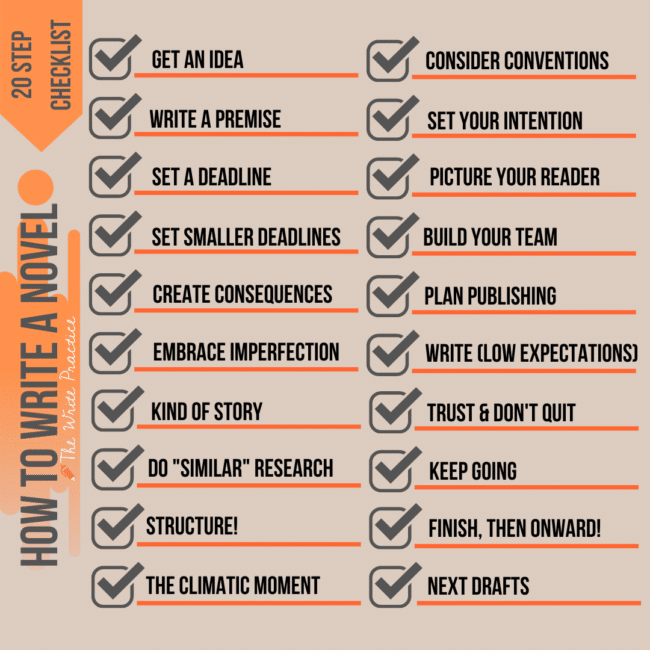
Key Takeaways
- The universal appeal of storytelling
- Key differences between novels and short stories
- Seven practical steps from brainstorming to publishing
- Tips for drafting, revising, and polishing your work
Table of Contents
- Introduction
- Section 1: Understanding Storytelling
- Section 2: Novel vs. Short Story
- Section 3: Brainstorming & Idea Generation
- Section 4: Outline Your Story
- Section 5: Develop Your Characters
- Section 6: Setting and World-Building
- Section 7: Start Writing
- Section 8: Revise and Edit
- Section 9: Final Steps & Publishing
- Section 10: Recap
- Conclusion
- Additional Tips & Resources
- FAQ
Introduction
From ancient myths to modern novels, storytelling is the heartbeat of human culture.
If you’re wondering how to write a novel or short story, this guide will walk you through each step. Stories connect people, convey experiences, and inspire change.
Whether you dream of crafting a sweeping epic or a concise tale, this beginner’s guide offers essential writing techniques for beginners and a clear path forward.
- The universal appeal of storytelling
- Key differences between novels and short stories
- Seven practical steps from brainstorming to publishing
- Tips for drafting, revising, and polishing your work
Let’s begin this creative journey into novel writing guide essentials.
Section 1: Understanding Storytelling—Writing Techniques for Beginners
Why Stories Matter
- Shape cultures and pass down values
- Provide therapy: writing helps process emotions
- Educate by putting facts into human contexts
Anyone Can Be a Writer
- Writing isn’t a talent reserved for the few
- Practice, curiosity, and guidance build skill
- A simple idea can grow into a powerful narrative
Key Benefits of Storytelling
- Emotional connection: readers empathize with characters
- Cognitive boost: improves focus and memory
- Social impact: spreads ideas and sparks conversations
By embracing these writing techniques for beginners, you’ll see how accessible storytelling truly is. Source
Section 2: Differences Between a Novel and a Short Story—Novel Writing Guide
Definition of a Novel
- Fiction over 40,000 words
- Multiple plots, in-depth themes, extended character arcs
Definition of a Short Story
- 1,000 to 7,500 words
- Centers on one event or emotion
- Snapshot format with immediate impact
Key Differences
- Length and Depth
– Novels: room for subplots and world-building
– Short stories: concise, punchy, focused on a single idea - Character Development
– Novels: explore motivations over time
– Short stories: spotlight a critical moment in one character’s life - Plot Complexity
– Novels: intertwine parallel storylines
– Short stories: drive toward a single conflict
Choosing Your Format
- Time commitment: longer for novels, shorter for short stories
- Story goal: expansive exploration vs. sharp emotional turn
- Personal preference: do you like broad canvases or tight, focused tales?
- Learn more about how to write a novel or short story to help you decide the best format for your story.
Understanding how to write a novel or short story starts with picking the right format. Source
Section 3: Brainstorming & Idea Generation—Writing Techniques for Beginners
Finding Inspiration
- Observe your surroundings: people, places, news headlines
- Keep a journal for random thoughts and snippets
- Ask “What if…” questions:
– What if an old photograph came to life?
– Why now is this story needed in our world?
– Who is this about, and what drives them?
Plot-Driven vs. Character-Driven
- Plot-Driven: action-focused (thrillers, mysteries)
- Character-Driven: inner journey is the heart (literary fiction)
- Mix both for richer stories
Tips for Beginners
- Start small: one scene or character sketch
- Combine concepts: merge two simple ideas
- Embrace weirdness: unique premises spark reader interest
These writing techniques for beginners will keep your ideas flowing. Source
Section 4: Outline Your Story—How to Write a Novel or Short Story
Why Outline?
- Provides structure and direction
- Prevents blank-page anxiety
- Keeps pacing tight
Popular Methods
- Three-Act Structure
Act I – Setup: introduce characters, setting, inciting incident
Act II – Confrontation: obstacles, rising tension
Act III – Resolution: climax and wrap-up - Snowflake Method
1. One-sentence summary
2. Expand to paragraph, then pages, then scenes - Mind Mapping
Visual web of characters, scenes, themes
Outlining Short Stories
- Focus on central conflict and resolution
- Use one or two bullet points per scene
Effective Tips
- Stay flexible—allow the story to surprise you
- Use bullet lists or index cards scene-by-scene
- Review and adjust as you go
A solid outline is a core part of any novel writing guide. Source
Section 5: Develop Your Characters—Novel Writing Guide
Creating a Strong Protagonist
- Goals: what do they want?
- Strengths and flaws: make them relatable
- Backstory: past events that shaped them
Supporting Characters
- Allies and rivals that deepen the plot
- Each character should have their own motivations
Character Arcs
- Change over time (timid → courageous)
- Internal vs. external motivations: fears, hopes, rival forces
Depth by Format
- Novels: room for multiple arcs and side characters
- Short Stories: focus on one character’s turning point
Tools for Development
- Character Profiles: age, traits, history, quirks
- Dialogue and Actions: show personality through speech and behavior
Follow this novel writing guide to breathe life into your characters. Source
Section 6: Setting and World-Building—Novel Writing Guide
World-Building Essentials for Novels
- Geography, culture, history, technology
- Societal norms and conflicts
Scaling for Short Stories
- Pick only key details that serve the plot
- Use concise, vivid imagery
Using Setting to Enhance Theme
- Mirror emotions in weather or location (e.g., storm to reflect turmoil)
- Contrast environment and character mood for tension
Sensory Details to Engage Readers
- Sight: colors, shapes, movements
- Sound: creaking doors, distant laughter
- Smell: rain on pavement, burning wood
- Touch: rough bark, sticky humidity
- Taste: metallic blood, sweet fruit
Balance detail with pacing—avoid info dumps by revealing world bit by bit. Source
Section 7: Start Writing—Practical Writing Techniques for Beginners
Establish a Routine
- Set daily or weekly word-count goals
- Find a distraction-free space
Common Pitfalls
- Info Dumping: weave backstory into action
- Over-Plotting: keep events essential and clear
Essential Tips
- Show, Don’t Tell: He clenched his fists (showing anger)
- Active Voice Over Passive: She discovered the door vs. The door was discovered
- Begin In Media Res: start in the middle of action
- Effective Dialogue: distinct voices for each character
- Clear Point of View: first-person, third-person limited, or omniscient
First Draft Mindset
- Embrace imperfect prose
- Focus on completion, not perfection
Overcoming Writer’s Block
- Take short breaks or switch scenes
- Use prompts or free-writing exercises
These writing techniques for beginners will get your words down on the page. Source
Section 8: Revise and Edit—Writing Techniques for Beginners
Revision vs. Editing
- Revising: big-picture fixes (plot holes, pacing)
- Editing: grammar, spelling, phrasing
Separate Writing and Editing
Maintain creative flow by postponing edits.
Self-Editing Strategies
- Take a Break: return with fresh eyes
- Read Aloud: catch awkward sentences
- Stage Editing: structural changes first, then line edits
Gather Feedback
- Beta Readers: honest peers who spot issues
- Writing Groups: regular critique and support
Editing Tools
- Grammarly for grammar and style checks
- Hemingway Editor for clarity and readability
Using these writing techniques for beginners will polish your manuscript for submission. Source
Section 9: Final Steps and Publishing Considerations—Novel Writing Guide
Manuscript Formatting
- Times New Roman, 12 pt, double-spaced, 1-inch margins
Professional Editing
- Developmental edits for story structure
- Copyediting for language and consistency
Publishing Paths
- Self-Publishing:
Amazon Kindle Direct Publishing, IngramSpark
Design cover, format ebook, market your release
Explore self-publishing vs traditional publishing - Traditional Publishing:
Find agents, prepare query letters and synopses
Submit to publishers that fit your genre
Building an Author Platform
- Launch a website or blog
- Engage readers on social media (Twitter, Instagram, Facebook)
Enhance your online presence with SEO strategies
Affordable Book Marketing Services
- Discover cost-effective strategies to promote your book
Learn about affordable book marketing services
Continued Growth
Attend workshops and conferences; read widely and write regularly. Source
Section 10: Recap—Writing Techniques for Beginners
- Idea Generation: spark creativity through “what if”
- Outlining: map scenes and structure
- Character Development: craft goals, arcs, and depth
- World-Building: create immersive settings
- Practical Writing Tips: show vs. tell, active voice, routines
- Revising and Editing: refine your draft with feedback
Your next move: start writing today. Every celebrated author began as a novice. Begin your novel or short story with our comprehensive guide
Final motivation: Your unique voice matters—let it shine on the page. Source
Conclusion and Call to Action
Thank you for exploring this beginner’s guide on how to write a novel or short story. Which step resonates most with you? Share your thoughts or questions in the comments below.
For more resources, check out our newsletter where you’ll receive a free PDF: “Top 10 Writing Prompts for Beginners.” Sign up now to keep your creativity flowing.
If you found this article helpful, please share it on social media and help other aspiring authors discover these novel writing guide essentials.
Additional Tips & Resources
Recommended Reading
- “On Writing” by Stephen King
- “Bird by Bird” by Anne Lamott
Online Writing Tools
- Grammarly: https://www.grammarly.com/
- Hemingway Editor: http://www.hemingwayapp.com/
Writing Communities
- NaNoWriMo: https://nanowrimo.org/
- Scribophile: https://www.scribophile.com/
Educational Articles
- “The Elements of Style” by Strunk and White
Persistence and practice are your best teachers. Keep writing, keep learning, and your stories will find their readers.
FAQ
Q: How long should my first draft take?
A: There’s no fixed timeline; aim for consistent daily goals. Some writers finish a draft in weeks, others take months. The key is steady progress.
Q: What’s the difference between plot-driven and character-driven stories?
A: Plot-driven stories focus on external events and actions, while character-driven tales explore an individual’s internal journey. Mixing both often yields rich narratives.
Q: How often should I revise my manuscript?
A: After completing the first draft, set it aside for a few days to return with fresh eyes. Then, tackle big-picture revisions before moving to line edits and proofreading.
Q: Should I outline rigidly or be flexible?
A: Outlines provide direction, but remain open to new ideas. Allow your characters and plot to evolve organically as you write.



